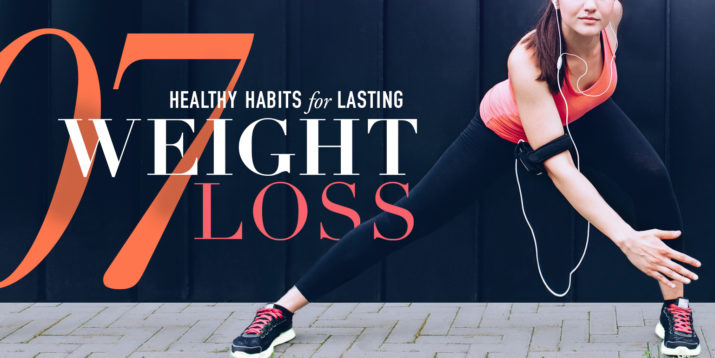
How Often Should You Eat for Weight Loss?
Losing weight is a lot like finding the perfect pair of jeans: Not one style fits all. If your goal is weight loss, should you eat throughout the day or is there value in reserving meal times for certain segments of the day? It turns out that answer is personal.
“The recommendations for eating patterns [including the number of times you eat throughout the day as well as when you eat] needs to be approached on an individual basis taking individual goals into consideration,†says Jessica Bachman, Ph.D. and professor in the Department of Exercise Science at the University of Scranton.
One long-running, popular approach to promote general health and weight maintenance has been to spread calories throughout the day in the form of several small meals.
Jennifer O’Donnell-Giles, a registered dietitian, exercise physiologist, and owner of Active Nutrition in Southbury, Connecticut, recommends eating small meals and snacks every three to four hours throughout the day to support your activity and keep you sated. Doing so, she suggests, makes you less likely to consume excess calories during meals. The hungrier you are, the more likely you’re going to reach for high-calorie junk food, like pizza and soda, she says.
There is some data to support this. Bachman led a study that appeared in the Journal of the Academy of Nutrition and Dietetics, in which people who were of normal weight or those who were maintaining their weights reported eating more often than individuals who were obese.
“The hypothesis is that if you eat small meals and snacks throughout the day, you never allow yourself to get overly hungry,†says Bachman. “We know that people tend to eat more when they are very hungry, so by avoiding this greater level of hunger, maybe people can limit overeating and therefore control their calorie intake and, ultimately, weight.â€
Bachman followed up her original study with a six-month weight-loss intervention with two groups of 25 overweight and obese adults. One group was told to eat all of their calories in three meals a day and the other group was told to eat meals and snacks at two- to three-hour intervals throughout the day. Both groups lost weight. But the group that ate three times a day ate fewer calories and lost more. “What we found was contrary to observational research. It appeared that eating less often, and therefore being exposed to fewer opportunities to overeat, may help people with losing weight.â€
Does Time-Restricted Eating Impact Weight Loss?
However, there is some research, albeit it completed on mice, that suggests that focusing on time-restricted feeding could impact weight loss in those who are obese.
A study at the Salk Institute in La Jolla chose to look at time-restricted eating instead of focusing on specific types of diets or the number of meals consumed. Their hypothesis: How efficiently the body handles calories is more closely related to the circadian rhythms of active and rest periods than the food consumed. The researchers at Salk, led by Associate Professor Satchidananda Panda, tested 400 mice. The mice were given a range of diets, from high fat to just sucrose or fructose. Scientists found that those restricted to an eight- to 12-hour feeding window lost weight and were healthier than those allowed food all day.
Even the mice that had 24-hour access to a high-fat diet and became obese lost weight once their diets were confined to the feeding time frame. This held true for diets high in fat or sugar, even if the mice consumed the same number of calories as the all-day eaters. Those fed in the 9- to 12-hour window were leaner.
“It highlights the temporal aspect of feeding more than the calorie content, and shows it is important to eat during your active phase, which is when your body is tuned to energy expenditure and not energy storage,†says Circadian Biology Ph.D. Amandine Chaix, who participated in the study and felt these results could have further positive effects when tested on humans.
“One set of the population is already obese,†Chaix says. “So already being obese and switching to a time-restricted feeding can [help you] lose weight… that was really powerful.â€
Bachman said research is moving in the direction of meal timing, and may have further benefits for the aging population in addition to those overweight especially as it relates to the consumption of protein.
“This has potential important applications for older adults who are commonly plagued with muscle loss as they age but, also, for anyone trying to lose weight,†Bachman says. “With weight loss, you are losing not only fat but also lean muscle mass [this is actually natural, and nothing to worry about]. This way of eating may help prevent some of the loss in muscle mass.â€
But, all of this may come down to a numbers game: calories. Bachman says, “If someone is trying to lose weight, the individual needs to create a calorie deficit, ideally by eating fewer calories and exercising more.â€
How Many Calories Should You Eat for Weight Loss?

Granted, specific daily calorie amounts should be based largely on an individual’s weight, activity level, height and gender. Each Beachbody program you can find them all onBeachbody on Demand comes with a program-specific eating guide, but you can also choose to follow Beachbody’s Portion Fix Eating Plan. The Portion Fix plan includes the following step-by-step process to figure out the total daily calorie range you should target for weight loss:
If you’re sedentary:
- Multiply your current weight by 11 to get your caloric baseline.
- Subtract 750 from your caloric baseline to get your calorie target for weight loss.
If you’re moderately active (work out occasionally or have a desk job but try to stay active):
- Multiply your current weight by 12 to get your caloric baseline.
- If you’re doing moderately challenging exercise (such as 21 Day Fix, FOCUS T25,CIZE), add 400 to your caloric baseline to get your maintenance calories.
- Subtract 750 from your maintenance calories to get your calorie target for weight loss.
If you’re very active (have a physical job or move as much as you can):
- Multiply your current weight by 13 to get your caloric baseline.
- If you’re doing challenging exercise (such as INSANITY, 21 Day Fix EXTREME,P90X2, or Body Beast), add 700 to your calorie baseline to get your maintenance calories.
- Subtract 750 from your maintenance calories to get your calorie target for weight loss.
If you want to:
- Gain weight, add 350 calories to your maintenance calories.
- If your calorie target is less than 1,200, round up to 1,200.
- If your calorie target is more than 2,800, round down to 2,800.
The Bottom Line
If the somewhat conflicting research on when and how often to eat to lose weight confuses you, keep in mind that the underlying point is to focus on keeping your total daily calories in the appropriate range for you to lose weight. There isn’t a one-size-fits-all approach to how you divide up those calories and when you eat them. Strive to eat appropriate portions of the best quality whole foods you can afford, make sure you’re well hydrated, and you should be supplying your body with all it needs to drop excess pounds.
“Long term, healthy balanced eating is the key to feeling and looking our best,†says Giles. “Otherwise, you wind up stalling your metabolism and chronically struggling with weight issues. When your body is properly fueled and in metabolic balance, it will then focus on weight management.â€
A healthy, well-balanced diet should include plenty of fresh vegetables and fruits, lean proteins, healthy fats (mostly monounsaturated and polyunsaturated), plenty of water, and whole grains. This eating plan should provide plenty of fiber, which not only promotes satiety, but also favorably influences energy balance.
Above all, no matter how you approach your weight loss, the end goal should be not only losing weight, but also figuring out how you can sustain a healthier lifestyle in order tomaintain your new weight.



